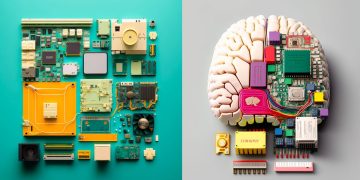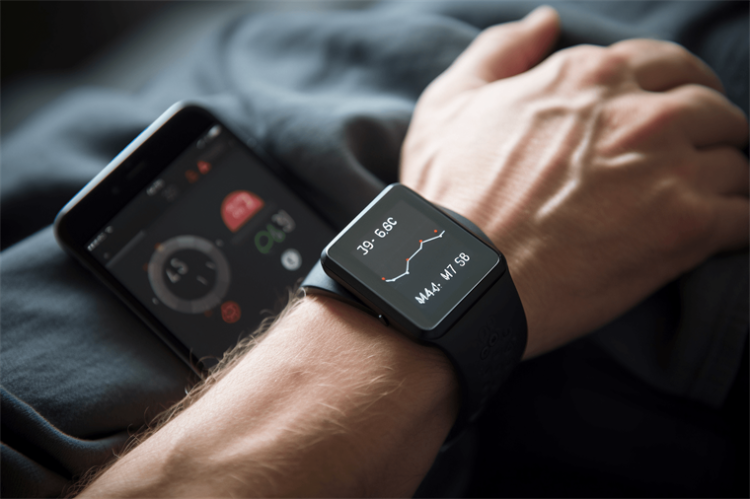Introduction
Smart wearables are taking the world by storm, revolutionizing not only how we interact with technology but also how we monitor and improve our health. From fitness trackers to smartwatches, these devices are now common in our daily lives, offering a new way to stay on top of our well-being. But just how much have these wearables really changed the way we live, especially when it comes to health and fitness?
In today’s fast-paced world, where stress, poor diet, and sedentary lifestyles often take a toll on our health, smart wearables offer an easy and accessible solution. They’re doing more than just counting steps—they’re becoming integral to how we manage everything from physical exercise to mental health. But how exactly are these gadgets redefining our approach to well-being?
The Rise of Smart Wearables in Health and Fitness
Before smart wearables became a global trend, fitness tracking was mainly limited to basic pedometers or heart rate monitors. These early devices served their purpose but were far from intuitive or integrated into everyday life. Fast forward to today, and we have a range of sophisticated devices capable of tracking not just steps but heart rate, sleep cycles, calories burned, and even stress levels.
At the forefront of this revolution are companies like Apple, Fitbit, and Garmin, which have introduced smartwatches and fitness bands that offer a deep dive into personal health. These devices have evolved from basic tracking tools into sophisticated gadgets that provide real-time data about your body, pushing us to become more health-conscious.
What Can Smart Wearables Actually Do?
So, what makes these wearables so special? Let’s break down some of the features that are making them indispensable.
- Fitness Tracking: Most smart wearables are designed to keep an eye on your physical activity throughout the day. They track things like steps, calories burned, distance, and active minutes. With these real-time updates, users can see exactly how much activity they’re getting, and they’re often given reminders to move if they’ve been sitting for too long. For example, the Apple Watch reminds users to stand up and move every hour, which can have a big impact on overall health.
- Heart Rate Monitoring: One of the most common features on wearables is continuous heart rate monitoring. By keeping tabs on your heart rate, you can get insights into your cardiovascular health, detect abnormal heart rhythms, and even gauge the intensity of your workouts.
- Sleep Tracking: Getting enough quality sleep is crucial for good health, and wearables like the Fitbit and the Apple Watch monitor your sleep patterns. They can tell you how long you’ve slept, how much deep sleep you’re getting, and even how often you wake up during the night. Armed with this data, you can make better decisions about your sleep hygiene and aim for more restful nights.
- Stress Monitoring: Some wearables can even track your stress levels. Through heart rate variability (HRV) and other metrics, they can detect when your body is in a stressed state, offering suggestions for relaxation like breathing exercises or guided meditation. This helps with mental well-being, not just physical fitness.
- Health Insights: Many devices go beyond tracking to offer personalized insights based on the data they collect. For instance, if a user is consistently not meeting their exercise goals, a wearable might suggest more achievable targets or even offer tips on how to incorporate more activity into their day.

Changing Exercise Habits: Wearables as Motivational Tools
Smart wearables are not just about tracking data—they’re also designed to help users stay motivated. One of the most powerful aspects of these devices is how they engage users and encourage them to stay active.
- Gamification: Many wearables have gamified fitness to make staying active more fun. With achievements, badges, and challenges, users can compete with themselves or others. For example, you might get a badge for walking 10,000 steps in a day, or you might join a step challenge where you can compete with friends or family members. This gamified approach can turn something as simple as walking into a fun, competitive activity.
- Goal Setting: Wearables allow you to set personal fitness goals and track your progress in real-time. The device will provide feedback on how close you are to meeting your goals, which can motivate you to keep pushing. Some devices even offer encouraging messages when you’re close to completing a challenge.
- Social Connectivity: Many wearables are designed to connect you with your friends, family, or a fitness community. You can share your progress, challenge others, or simply find support through social features built into apps. This sense of community can keep you engaged and motivated to maintain healthy habits.
Wearables and Mental Health
While most people associate smart wearables with physical health and fitness, these devices are also playing a role in managing mental health. Modern wearables are increasingly equipped to track your mood and stress levels, offering tools that encourage mindfulness and mental wellness.
- Mindfulness Features: Many devices come with built-in apps or features that promote mental well-being, like guided breathing exercises or mindfulness meditation. These features are designed to help users manage stress and anxiety, making it easier to practice mindfulness throughout the day.
- Stress Detection: By monitoring metrics like heart rate variability (HRV), wearables can assess your stress levels and alert you when you might be overdoing it. These devices can suggest simple relaxation techniques, helping users de-stress in real time.
- Mental Health Insights: Just like with physical health, wearables are becoming more adept at tracking mental health trends. Over time, they can spot patterns and suggest ways to improve mood, mental resilience, and overall mental health, all based on collected data.
The Future of Smart Wearables: What’s Next?
Smart wearables are only getting smarter. As technology advances, so too will the capabilities of these devices. Here are some exciting developments we can expect in the future:
- AI and Machine Learning Integration: The future of smart wearables lies in AI. As more data is collected, AI can be used to analyze patterns and make even more personalized health recommendations. For example, AI could predict potential health issues before they become major problems, offering early warnings and advice for preventative care.
- Better Biometric Sensors: With improvements in sensor technology, future wearables may be able to track even more detailed information, like blood glucose levels, blood pressure, or even dehydration. This could be a game-changer for people managing chronic health conditions.
- Wearables in Healthcare: Wearables could eventually play a more active role in healthcare systems, offering real-time monitoring of patients with chronic conditions. For example, doctors could monitor a patient’s vital signs remotely, reducing the need for frequent office visits and allowing for more proactive healthcare.
- Advanced Sleep Monitoring: As sleep becomes a more significant part of overall health, expect to see even more accurate and comprehensive sleep tracking in the future. Wearables could give us insights into our sleep cycles, offer tips for improving sleep quality, and even help with sleep disorders.
Challenges: Privacy, Accuracy, and Adoption
While the benefits of smart wearables are clear, there are still some challenges to overcome.
- Data Privacy: Wearables collect a vast amount of personal health data, and there are concerns about how this data is stored and used. Who owns this data? Can it be shared with third parties? How can users ensure their health information is secure?
- Accuracy of Tracking: While wearables are great at providing insights, they’re not always 100% accurate. For example, step counting and heart rate tracking can be affected by factors like device placement or user behavior. While wearable tech is advancing, it still needs to be considered as an additional tool, not a medical device.
- User Adoption: Some people may still be hesitant to adopt wearables, either due to privacy concerns, cost, or simply a lack of interest in tracking their health. For wearables to reach their full potential, more education and awareness will be needed.
Conclusion
Smart wearables are changing the game when it comes to health and fitness. They not only help us stay motivated and track our physical activity but are also transforming how we monitor our overall health, including our mental well-being. As the technology continues to evolve, we can expect even more personalized insights, more accurate data, and even greater integration with the healthcare system. For those looking to take charge of their health, wearables are the perfect tool to do so, offering a smarter, more efficient way to stay healthy in the modern world.
















































Discussion about this post